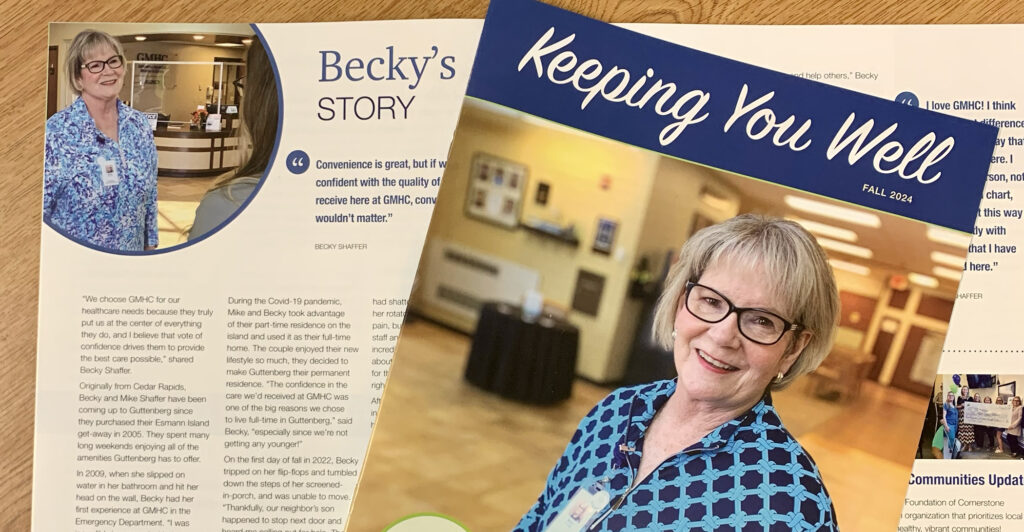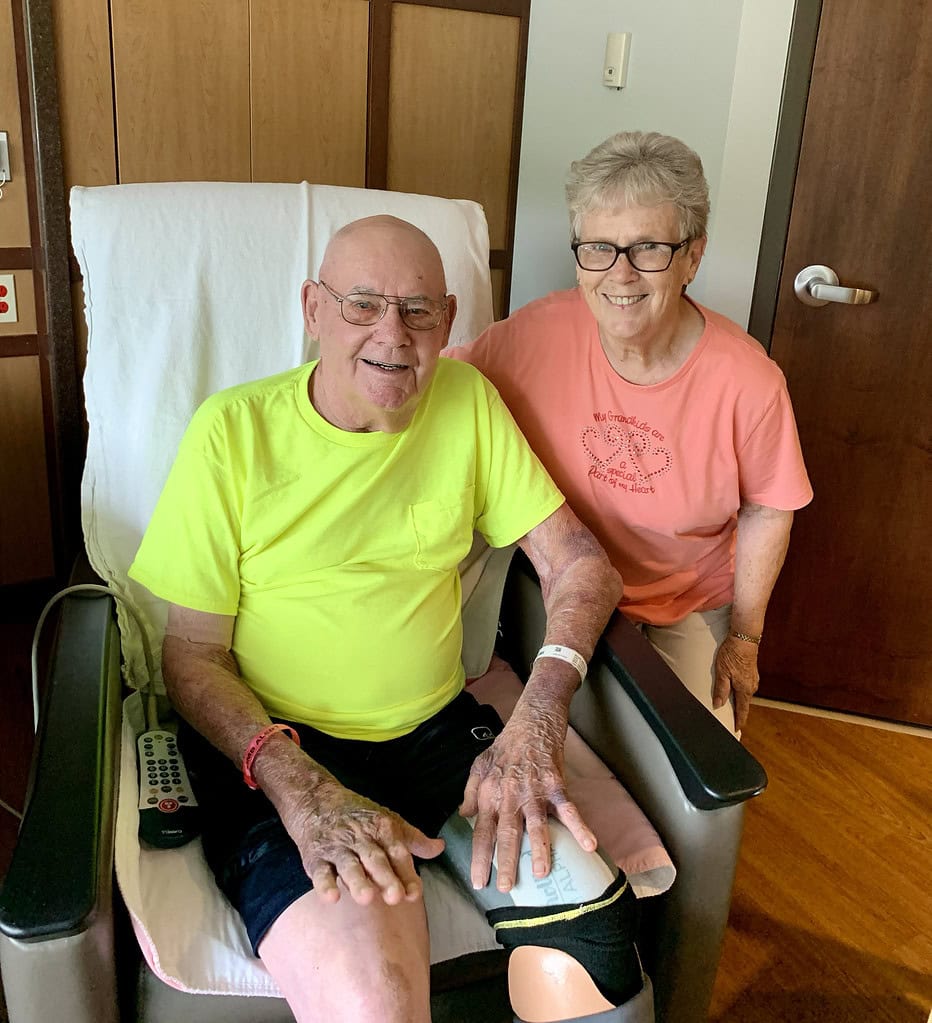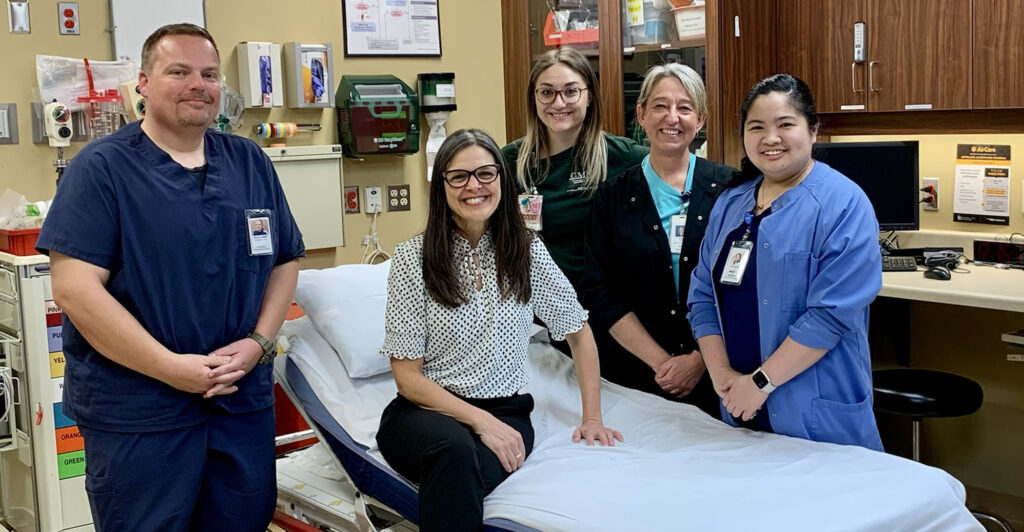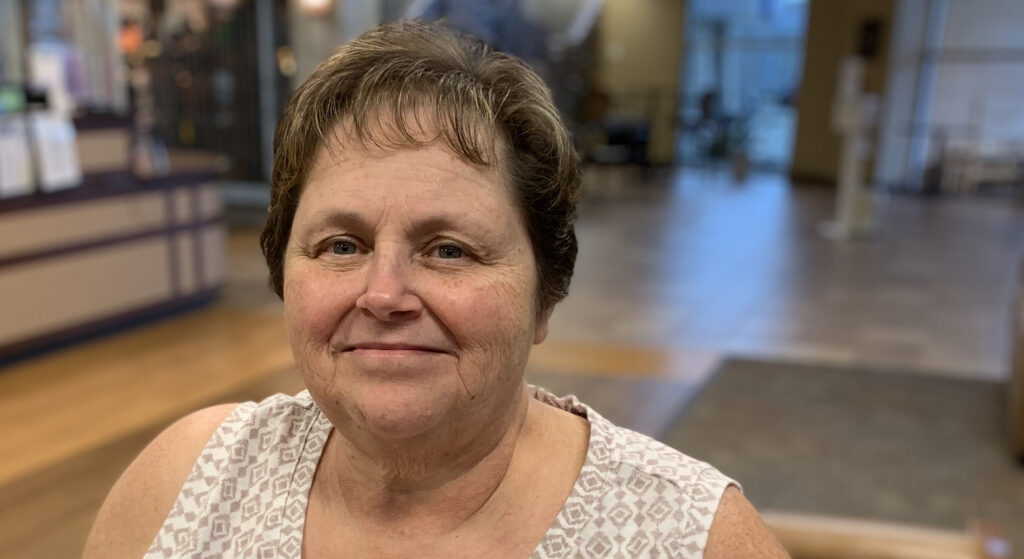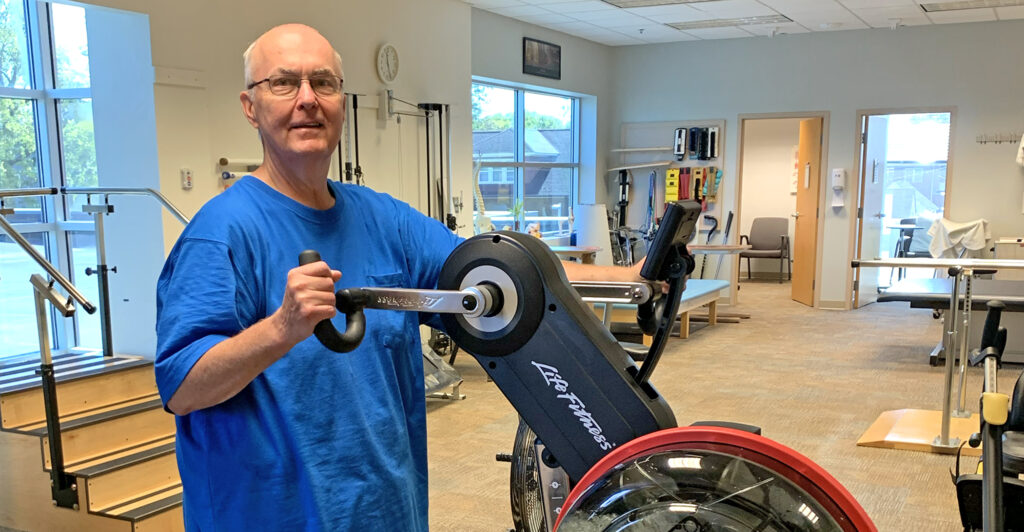
Audie’s Story
Most people who know Audie see him as a quiet person, but behind this demeanor he’s very competitive—especially with himself.
Back in 2019, Audie set an impressive goal for himself: to walk a minimum of 13,000 steps each day, which adds up to just over 5 ¾ miles. This daily challenge was one he committed to wholeheartedly, as he pushed himself to maintain his routine rain or shine. His dedication to his goal was so strong that he didn’t miss a single day until November 27, 2023, when he underwent open-heart surgery—a temporary pause in his journey to better health.
In 2023, during a check-up with Dr. Hoffmann—just one week before the doctor retired—concerning issues came to light. Audie scheduled a follow-up appointment with Cardiologist Dr. Ramabadran (Dr. Ram.) to further investigate his condition, which revealed severe stenosis and a needed aortic valve replacement.
Even though open-heart surgery was the best option for his condition, Dr. Ram believed that Audie’s commitment to daily exercise may have played a significant role in masking the severity of his heart condition. His consistent daily walking routine likely kept his body strong and resilient, making it difficult for him to feel the full impact of the severe stenosis. Audie’s dedication to staying active might have minimized symptoms, underscoring the powerful impact of regular exercise on overall health—even when underlying issues are present.
After his surgery last November, Audie requested to complete his rehab at GMHC. Dr. Ram, who also serves as a cardiology specialist at GMHC, agreed to Audie’s request, making it possible for him to complete his rehab and receive follow-up care right here at home with familiar faces.
“They started me slowly and were incredibly careful, while always encouraging me in my recovery,” reflected Audie. “It was such a blessing to be able to stay local for my rehab. I can’t say enough about the incredible team that we have here. They’re caring, compassionate, encouraging, and they work together so well. Whoever I work with always has a smile on their face and is always helpful.”
As part of his rehab, Audie completed 36 sessions, 2 to 3 sessions per week, spread out over 15 weeks. Upon completion of the program, Audie was granted free access to the GMHC Rehab Gym. Audie took full advantage of this perk and began his next walking streak to maintain his health, continue to improve his cardiovascular fitness, and lose a little bit of weight to enjoy and extend his life.
“Through 11/24/24, I have now met my new revised goal of walking a minimum of 11,300 steps (5 miles) each day for 282 consecutive days. Not only do I enjoy being at GMHC to work out and see the staff who took such great care of me, but I also enjoy opportunities to encourage other rehab patients on their journey back to health.”
Audie’s determination and resilience are truly inspiring as he makes every step count towards his personal goals.



